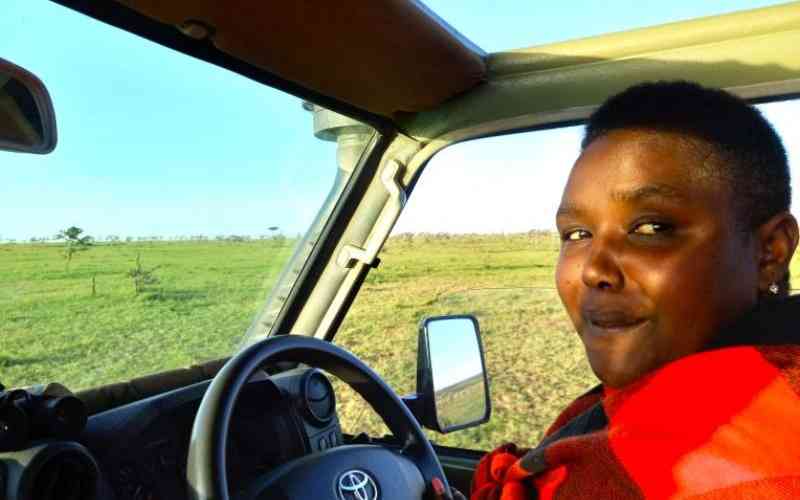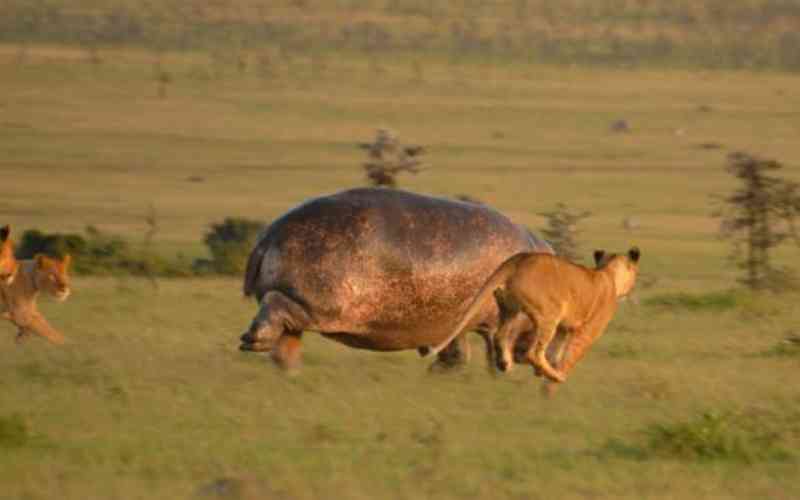
“Here is your coffee,” the guard on duty called out loud. “And you have 15 minutes to your game drive. She is waiting for you.”
It was still dark when my alarm went off, perhaps a few minutes to five in the morning. While I snoozed some more, there was no way I could ignore the guard’s call.
In any case, I had placed this wake-up call before retiring to bed. In Masai Mara, it is a race against time to get the first glimpses of life in the wild.
At the parking lot, Agnes Nashipae had already done the last-minute checks on the open-sided Toyota Landcruiser, so beloved by tour companies and game lodges. “Kila kitu iko sawa, twende.”
Nashipae, or Nash to her colleagues, is among the few, but steadily growing number of Maasai women who are no longer just content with staying home and looking after the children and family property.
With many girls in Maasailand embracing education, the shift to formal employment by local women has upset a cultural balance that has existed over the centuries. For Nashipae, this almost caused a rift between her and her male siblings.
“I had a passion for guiding and nothing or nobody was going to stand in my way. I even told my baby daddy that he either lets me do this job or we part ways. He is proud of what I do,” says Nashipae as we set off for an early morning game drive in the 50,000-acre Naboisho Conservancy.
The sound of the vehicle upsets some zebras that leave a trail of dust in their wake. Warthogs follow suit but stop abruptly to munch on some new grass shoots. “These have very short memories and that is how they get killed by predators.”
Nashiape was born and grew up in Aitong, a settlement to the north of Maasai Mara. She schooled at Ngoswani Primary School before moving to St Mary’s Bomet School for her secondary education.
This was an accomplishment considering her parents were not educated but saw the value in her going to school. In this part of the country, some parents prioritise boy’s education over that of girls.
“In our case, it was the local chief who rounded us up and took us to school. If this did not happen, I am sure I would have just gotten married at a young age just like many other girls here,” she says.
But it was what she saw daily on her way to school that guided her career into becoming a tour driver and guide. Her home is located within Lemek Conservancy which teems with wild animals.
Whenever she walked to school, she would sometimes come across the animals, or vans with tourists watching the same. In most cases, a local Maasai man would be in the driver’s seat.
“I kept asking myself, ‘If these men can drive these vehicles, why can’t I?’ In any case, some women drive daily, either to go to work or to handle their businesses. My mind was made up,” says Nashipae, a mother of two; a 14-year-old boy schooling in Mulot, near Bomet, and a one-year-old girl.
At a clearing within the conservancy, Nashipae stops the car and kills the engine. She searches for her binoculars among a pair of Maasai blankets lying on the front passenger seat. “I think those are lions.” The first rays of the rising sun start to hit the plains, casting a golden hue on the savannah.
True to her prediction, we come across two male lions in robust health. Their regal walk is awe-inspiring, especially when they rub their heads together during the slow march.
One lion approaches our vehicle from the front and the other from the rear. The one at the rear pees on the tyre to mark his territory. “Are we safe?” I whisper to Nashipae, trying not to betray any hint of fear. She laughs. “You are very safe. Lions rarely attack humans unless provoked.”
Nashipae’s binoculars are now trained on a small dam about 300 metres away. “There are more lions there, and a hippo. Something is going to happen.”
Even before we get to the dam, the hippo decides to get out of the water with the lions giving chase. It is a race to nought as the hippo outruns close to ten lions before plunging into yet another dam half a kilometre away.

“That is one stupid hippo. He could have just stayed in the former dam rather than take the risk with the lions. But then animals don’t think,” says Nashipae.
So how did you get into driving and guiding tourists?” I ask her.
“Between 2015-16, I enrolled in Koiyaki Guiding School here in the Mara. By then my dad was dead and my brother was not amused by my choice and wanted me to change my mind. I begged to be allowed to continue. I was the best student there. We were two girls and 21 boys,” she says.
Sadly, discouragement even came from those who ought to have encouraged her to continue with the guiding lessons.
“Some teacher told me the job I was training for is tough for girls. Why would teachers discourage me rather than motivate me? I had to believe in myself.”
After graduation, Nashipae went for training in a local tourist camp for a year and a half. Towards the end of 2016, she applied and was accepted in Basecamp Leopard Hill, her present base.
“I am doing what I love. I never get bored of this. As you just witnessed, there is always something new in the bush every day,” says Nashipae.
“I am happy that camps like (Leopard Hill) are giving Maasai women a chance to prove that they are equal to the task of driving and guiding local and international tourists.”
It will take women like Nashipae to encourage young girls in and out of school that there are no jobs set aside for men in the community.
This, she says, is what will change Maasailand, when women get financially empowered and stop relying solely on men. “Unfortunately, many girls get married even after getting trained in guiding.”
“Are there challenges of being a lady guide?” I ask.
“Not more challenges than the ones men encounter,” she says “What bothers me is when some men refuse to get in my vehicle saying they may not feel safe in case of an animal attack. We are trained in animal behaviour. Did we not get in the middle of a pride of lions this morning?”